This pickled garlic scapes recipe uses fermentation for a no-cook, no-fuss recipe. Simply pack them in the jar and you’re done!
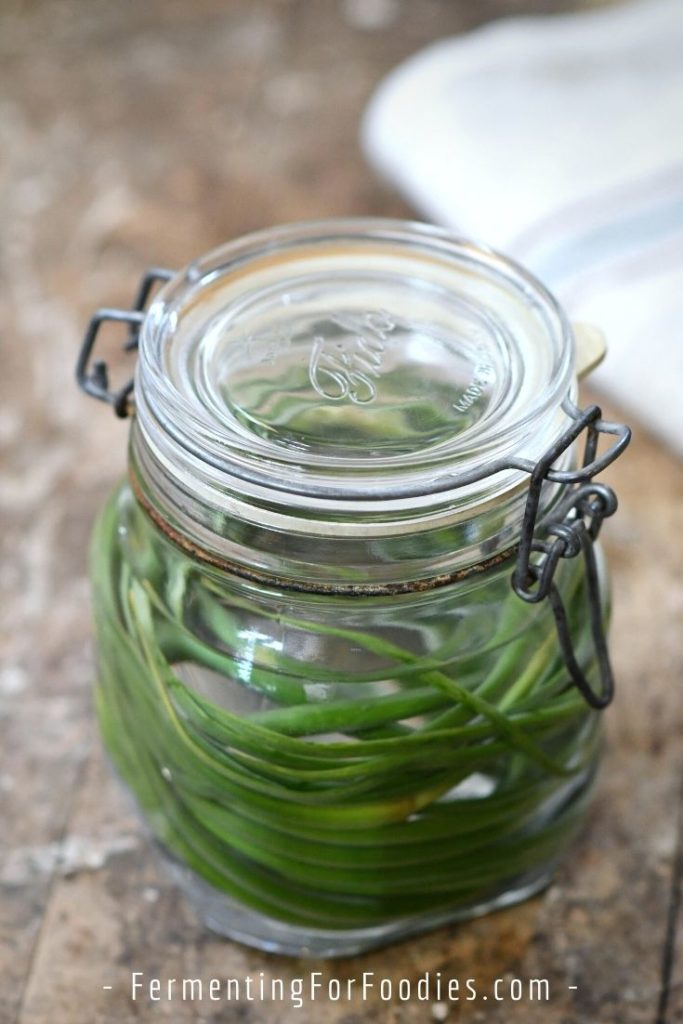
Imagine sitting next to a farmer’s field somewhere in the south of France and being served an early summer Niçoise salad. It’s too early for beans, but fleurs d’ail are in season. They are succulent, salty, and garlicky. Softened, not by cooking, but from a few weeks of fermentation.
What are fleur d’ail or garlic scapes?
Garlic scapes are the budding flower that comes just before the head of garlic is ready to harvest. It’s not something you would find in your average grocery store, but if you aren’t a gardener, you may be able to find them at your local farmer’s market in the months of May, June, and July.
The whole curling stem is delicious, with a mild garlic flavor and asparagus or green bean-like crunch. If not harvested in the budding stage, a scape will bloom with a bright purple flower.
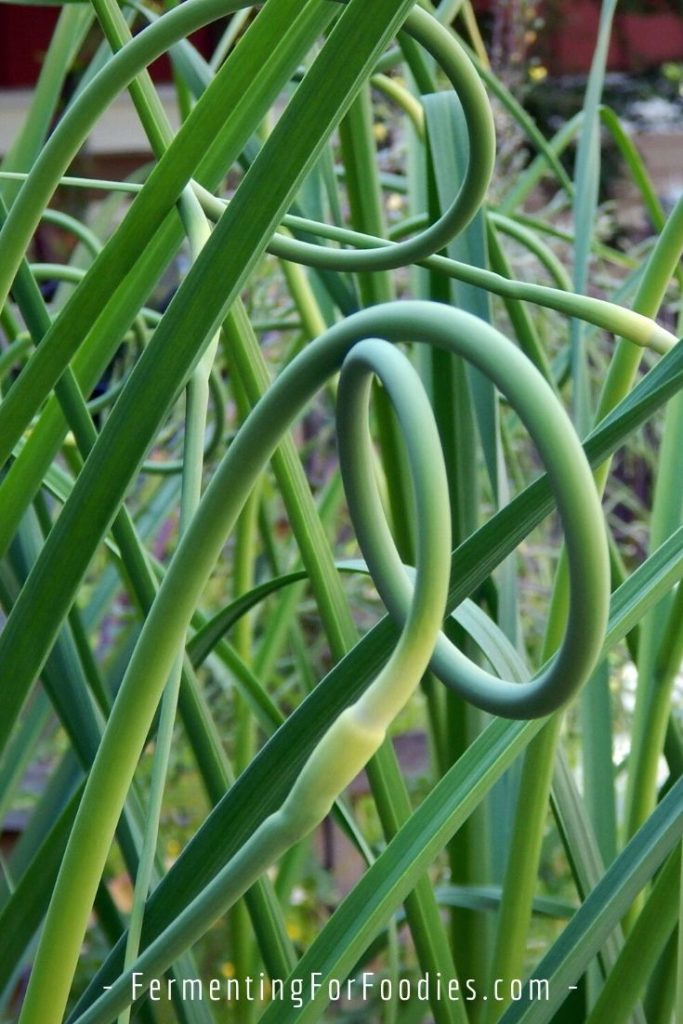
How to serve pickled garlic scapes
Honestly, the question is not how you should serve your fermented scapes, but rather exactly how do you want to celebrate this very special crop.
Pickled garlic scapes are incredibly delicious. They are also beautiful, rustic, and a bit posh. We usually can only harvest enough from our small garden to have them in one or two dishes. So every year it’s a struggle to decide exactly how we want to serve them.
Here are a few suggestions:
- On pasta with an aglio e olio sauce.
- With a Nicoise salad.
- Diced up in a posh potato salad.
- Add them to pizza after it has finished cooking, right before serving.
- In a Buddha bowl.
- Soften and well-fermented scapes are delicious with crackers and cheese.
Fermented Garlic Scapes
Fermented garlic scapes are succulent, salty, and deliciously garlicky. They are perfect on pasta, delicious in a salad, or served with crackers and cheese. See the section above for more serving options.
- Prep Time: 10 minutes
- Total Time: 10 minutes
- Yield: 1 pint jar 1x
- Category: Pickles
- Method: Fermented
- Cuisine: French
- Diet: Vegan
Ingredients
- 2 cups of garlic scapes (or as many as you can find)
- 1 1/2 tsp salt (non-iodized)
- 1 1/2 cups filtered water (chlorine-free)
- 2 Tbsp of raw apple cider vinegar (see notes)
Instructions
- Decide whether you want to pickle the scapes whole or dice them into bite-sized bits. Keeping the curls whole will require more brine. The brine above should be enough for a pint-sized (1/2 L) jar of whole garlic scape curls.
- Mix the salt, water, and apple cider vinegar in the bottom of a jar.
- If you are keeping the curls whole, nest them together and carefully pack them into the jar. Otherwise, simply add the diced garlic scapes to a jar.
- Use a weight to keep the scapes below the brine, and add more water if required to keep the scapes submerged.
- Place the jar somewhere cool and dark (a kitchen cupboard is perfect). Let them ferment for 1-2 weeks. It will depend on your taste. The scapes will soften and become milder the longer they ferment.
Notes
- Apple cider vinegar is the starter culture for this ferment. So it’s important to use raw, unpasteurized vinegar with a mother. You can also use strong brewed kombucha, sauerkraut juice, or a purchased vegetable starter. While vegetables don’t need a culture to ferment, I have found that scapes usually need a little boost to get them started.
- I usually ferment in a fido
to prevent contamination with this very special crop. You could also use a mason jar
with a pickle-pipe
lid. Or if you want to go low-tech, just cover your ferment with a clean cloth. As long as the scapes remain below the salty brine, mold won’t be able to contaminate them.
- I have to give credit to a local fermenting maven for inspiring me to ferment my scapes!
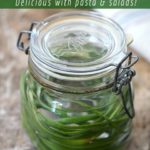
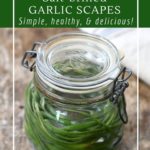
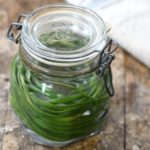
I could have given you enough scapes to pickle the city! If you try it let me know how it turns out.
We had a few scapes that were a bit tough in our last batch. Is there any way you can ferment these till they are tender? I was wondering about boiling them first.
I don’t recommend precooking the scapes. If they are a bit tough, just let them ferment for longer. They should soften up within a week.